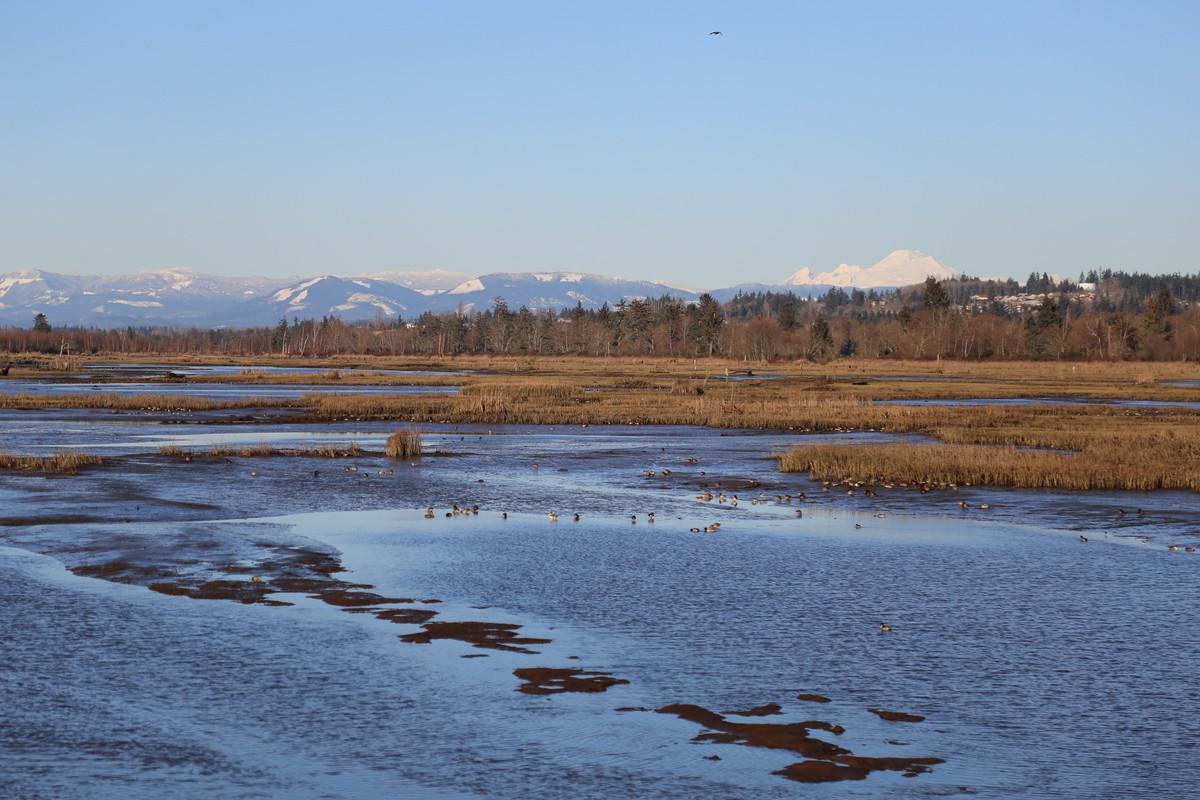Alerts
-
-
Drone flights to spray weeds at Snoqualmie Wildlife Area units
From April through August, WDFW staff will intermittently fly drones over several units of Snoqualmie Wildlife Area to spray weeds. Read full alert
-

Spencer Island estuary
Spencer Island Wildlife Area Unit
The approximately 2,840 acres of Snoqualmie Wildlife Area consists of six management units located in Snohomish and King counties. The wildlife area is situated within the Snohomish watershed, including the Skykomish and Snohomish rivers, which join to form the Snohomish River. Three of the units, including Stillwater, Cherry Valley, and Crescent Lake, are located near the city of Duvall. The other three units, including the Ebey Island and Spencer Island units and the Corson Wildlife Preserve, are located near the city of Everett.
Habitats on the wildlife area include open water, estuary, various types of wetlands, riparian areas, forested uplands, and seasonally flooded agricultural land. The various units contain a wide range of wildlife, such as waterfowl, eagles, and Chinook salmon. WDFW acquired the wildlife area properties between 1964 and 2008 using federal and state funding.
The department primarily manages the lands to preserve and enhance wildlife and their habitats, while also providing opportunities for wildlife-related recreational opportunities. By actively managing lands, restoring habitats, and preserving wild places, the department serves as stewards for Washington's natural places, protecting the state's land and water for its human and wildlife populations. View a story map about the Snoqualmie Wildlife Area and learn more about the opportunities and benefits WDFW land management facilitates for the public, wildlife, and habitats.
Wildlife area units
Management planning
2018 Snoqualmie Wildlife Area Management Plan
The Washington Department of Fish and Wildlife is developing a new management plan for the Snoqualmie Wildlife Area in northwestern Washington. The plan will provide management direction for nearly 2,774 acres in King and Snohomish counties. The Snoqualmie Wildlife Area consists of six units that are situated within the Snohomish watershed, including the Skykomish and Snohomish rivers, which join to form the Snohomish River. Habitats include estuaries, various types of wetlands, forested uplands, and agricultural lands. The various units contain a wide range of wildlife including waterfowl, eagles and chinook salmon. WDFW acquired the wildlife area properties between 1964 and 2008, using federal and state funding. The department primarily manages the wildlife area to preserve and enhance wildlife and their habitats, and to provide opportunities for hunting, and wildlife-related recreational opportunities. The new management plan will address the status of wildlife species and their habitat, ongoing restoration efforts and public recreation opportunities at the Snoqualmie wildlife area.
Planning Advisory Committee
Snoqualmie Wildlife Area Advisory Committee